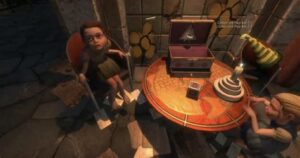
When I first watched Bioshock through my then-favorite content creator, ChaseMoney, my first interpretation of the game and its entire premise was the complete opposite of my latter interpretation at my now older age. My younger self thought Bioshock was a post-apocalyptic world where the splicers were the undead. Back then, I was utterly oblivious to the story; I thought our main character Jack’s primary objective was to complete tasks by Atlas’s bidding to eventually overthrow the “dictator” of Rapture who started the entire apocalypse. All I knew back then was that there was conflict between the citizens of Rapture and Andrew Ryan.
After finding out that we will be playing Bioshock in this course, I was elated because I finally would have an excuse for getting a hands-on experience with this game. This game was the epitome of a work of literary value as it contains many themes and lessons that critique the constant desire for society to become a utopia one day. This game indirectly gives insight into how that society cannot happen in the human world as humans are generally flawed.
Bioshock displays multiple themes, mechanics, and rooted character flaws that depict how a utopia cannot become a reality in this world. Both greed and gluttony played a significant role in the events of the story and were evident among the characters of Bioshock. Before and even during the events of Bioshock, we see a constant struggle between characters for wealth and power. This results from the fact that Rapture was entirely built upon individualism’s ideals that harbored an unrestricted hyper-competitive free-market economy that encourages individuality. Andrew Ryan’s intention for building Rapture was to escape the capitalist-driven world that constantly affected the innovation of those in various professions. The difference between Rapture and the surface world was that, in a Rapture, rules were minimal so that nothing would curb the creativity of its inhabitants. In the city that attempted to escape the constant problems that the surface world endured, like politics and economic greed, it was not long until Rapture would soon succumb to these same issues.
So, keeping this long story relatively short, Rapture was running smoothly until the discovery of Adam, a serum extracted from a sea slug that can be found within the waters surrounding Rapture. Adam provided its users with unworldly physical and healing abilities. However, given the supernatural powers that Adam provided the inhabitants of Rapture, it also came with an addictive nature that eventually consumed the citizens of Rapture. This widespread addiction to the serum did not go into effect until Frank Fontaine saw this need for Adam as an economical opportunity to mass-produce the serum for his gain. In Bioshock, there is a group of enemies that are called splicers. They are considered individuals who have hit rock bottom with their Adam addiction that they will try to get their fix of Adam by any means possible. To simply put it, they constantly attempt to attack the “little sisters,” who are young children who Frank Fontaine labored that gave him the ability to mass-produce the addictive serum. This conflict is a mechanic in the game that tests the player’s morals. The player could choose to kill the little sister themselves to gain more Adam as opposed to not doing so as the player also uses Adam to defend themselves throughout the game. Not going too far into all the various side effects of consuming Adam, the most common and most noticeable side effect was that the user’s skin would show prominent discoloration and blemishes. Something cool that I realized throughout my playthrough of Bioshock was that as we progressed throughout the game and utilized plasmids/Adam, our main character’s wrist would seem to progressively deteriorate similarly to the splicers who’ve completely fell victim to plasmid usage. Similarly, to how the citizens are Rapture built a crippling need for Adam to get through their daily lives, the player coming through the aftermath of this widespread addiction also gains the crippling need for Adam in order to be able to defend themselves in the city of Rapture.
Throughout this game, we see many different themes and lessons that we can learn and compare to real life as we know it. The combination of greed and gluttony and how they complement one another was just one theme of many in this game. There are much broader themes in this game, but this one caught my eye throughout my playthrough of Bioshock as it indirectly was a force that affected the player’s in-game decisions without them even knowing it.
